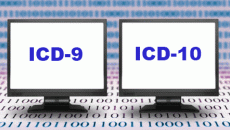Blog
Meaningful use of analytics to improve quality of care and organizational efficiency is contingent on an accessible user-friendly interface. How can "users" find their way back into the "user experience"?
In an industry under pressure to contain costs and improve outcomes, big data is proving to be a valuable asset. But data alone can't move the needle. It's all about how it's analyzed to drive smarter decisions.
Health organizations are often moving too quickly from EHR implementation to population health and risk-based contracts, glossing over (or skipping entirely) the crucial step of evaluating the quality of the data they're using.
Millions of Americans now victims of medical identity theft. Who are the criminals behind this digital era crime wave? A foray into the online black market for stolen data is a surreal experience.
Many organizations do a decent job of limiting access to data and systems for their general user population. When it comes to privileged access, however, most simply attempt to limit who has this type of access without considering some inherent risks.
With Stage 2 meaningful use, ICD-10, the HIPAA Omnibus Rule and the Affordable Care Act dominating the agenda these past few years, Beth Israel Deaconess CIO John Halamka, MD, is doing some research to help reshape next priorities.
After decades using ICD-9, we've learned to manage its quirks, says Jon Elion, MD, but we don't yet have that comfort level with ICD-10. He's not as concerned about ICD-10-CM as he is about ICD-10 PCS.
With the Oct. 1, 2015, deadline fast-approaching, is your organization ready for ICD-10? Here's a quick readiness assessment to benchmark where you are -- and where you should consider being.
Electronic health records are altering nearly every aspect of the caregiver-patient relationship -- not to mention changing caregivers' workflows with omnipresent tablets, handhelds, wall mounts and mobile carts. Today, nurses are on the front lines of this transformation.
(SPONSORED) Once upon a time, doctors made house calls. With fewer patients and time constraints, they could learn about people's lives, families and medical histories.






